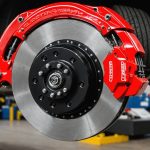Classic cars represent a timeless allure for many driving enthusiasts in the UK. Owning such a vehicle is not just about having a mode of transport; it’s about preserving history, enjoying the drive, and feeling a connection to the past. However, maintaining a classic car can be quite different from caring for a modern vehicle. There are unique challenges and considerations that classic car owners must understand to ensure their prized possession remains in excellent condition. This article will cover essential aspects of classic car maintenance, driving tips, insurance considerations, and more to help you keep your car running smoothly for years to come.
Understanding the Unique Needs of Classic Cars
Owning a classic car means embracing its unique characteristics and understanding its specific maintenance requirements. Unlike modern cars, classic vehicles often feature older technology and materials that require special attention. Many classic cars were built with different engine designs and materials that may not be as durable as today’s standards. This means that regular checks and maintenance routines are essential to keep the car in top shape.
Topic to read : How can UK drivers stay informed about changes in vehicle legislation?
You should be aware that classic cars often lack the advanced safety and efficiency features found in modern vehicles. For instance, they might not have anti-lock brakes, airbags, or modern emissions systems. Therefore, having a good understanding of your classic car’s engine and overall mechanical condition is vital for safe driving. Regularly checking the brakes, tires, and suspension system is necessary to ensure that your classic car remains safe on the roads.
Moreover, classic cars may require different oils and fluids compared to contemporary vehicles. Using the right oil is crucial for maintaining the engine’s health. You will need to research and use oils and lubricants that are suitable for your car’s age and model. This can prevent premature wear and ensure that your car is running efficiently. You should also keep an eye on the coolant levels and ensure that the cooling system is functioning correctly to prevent overheating.
Also read : What factors should young drivers in the UK consider when choosing their first vehicle?
In summary, understanding the unique needs of a classic car is the first step in maintaining it properly. Familiarizing yourself with its parts, components, and any quirks will help you provide the care it needs to thrive. Regular maintenance checks will not only improve your driving experience but also increase the longevity of your cherished classic vehicle.
Routine Maintenance: What You Should Do
Routine maintenance is crucial for keeping your classic car in prime condition. Unlike modern cars that may require less frequent servicing, classic vehicles need regular check-ups to preserve their functionality and aesthetics. You must adapt your maintenance routine to fit the specific needs of your classic vehicle.
To start, you should establish a regular schedule for inspections. This might include checking the engine oil levels, inspecting brakes, and ensuring that the battery is functioning correctly. Regularly replacing oil filters and air filters is essential to keep the engine running smoothly. Additionally, don’t forget to check the fuel system. Many classic cars can suffer from fuel line issues or carburetor problems, so ensuring these components are clean and functioning is key.
Another critical aspect of routine maintenance is the vehicle’s body and paintwork. Classic cars can be more susceptible to rust and corrosion, particularly if they are not stored properly. Regular washing and waxing can protect the paint and provide a barrier against the elements. You should also be aware of any chips or scratches; addressing them promptly can prevent rust from developing.
For those who enjoy driving their classic cars regularly, consider investing in upgraded tires designed for classic models. Proper tire maintenance, including checking the pressure and ensuring even wear, is vital for safe driving and handling. You may also want to periodically rotate the tires to extend their lifespan.
In conclusion, establishing a routine maintenance schedule for your classic car will help you keep your vehicle in top condition. Being proactive about inspections, oil changes, and protective measures will save you time and money in the long run and enhance your driving experience.
Insurance Considerations for Classic Cars
When it comes to classic cars, understanding the nuances of insurance is essential. Insuring a classic vehicle differs significantly from insuring a modern car. First, you should be aware that many insurers offer specialized classic car insurance policies that are tailored to the unique needs of vintage vehicles. These policies can provide better coverage options than standard car insurance.
One of the critical considerations for classic car insurance is the valuation of your vehicle. Unlike modern cars, which depreciate in value over time, classic cars can appreciate. Therefore, it’s essential to obtain an accurate valuation that reflects the market value of your car. Many insurance companies will ask for a professional appraisal to determine the appropriate coverage amount.
You should also think about how you plan to use your classic car. If you intend to drive it daily, you’ll need a policy that covers regular use. However, if you primarily use it for shows or special occasions, a limited-use policy might be more suitable and cost-effective. Keep in mind that many classic car insurance policies have mileage restrictions, so you need to consider how often and how far you plan to drive your vehicle.
Additionally, it’s wise to look for policies that offer roadside assistance and specialized repair coverage. Classic cars may require specific parts that can be difficult to find. Having insurance that covers this aspect can save you from future headaches and expenses.
In summary, understanding classic car insurance is crucial to protect your investment. Researching specialized policies, obtaining accurate valuations, and considering your driving habits will enable you to select the right coverage for your classic vehicle.
Driving Tips for Classic Car Owners
Driving a classic car comes with its own set of challenges and rewards. The experience is often more about enjoyment than practicality. However, knowing how to drive your classic car safely and efficiently is essential for both your enjoyment and the car’s longevity.
First and foremost, you should always be aware of your vehicle’s limitations. Classic cars may not handle or accelerate like modern cars, so you need to adjust your driving style accordingly. Pay attention to the vehicle’s responsiveness, and don’t push it beyond its capabilities. Also, be mindful of how the brakes perform. Older brakes may not provide the same stopping power as contemporary systems, so always leave plenty of space between you and the vehicle in front.
Another important driving tip is to be conscious of road conditions. Classic cars can be less forgiving on rough surfaces, and potholes can cause damage to older suspension systems. Driving smoothly and avoiding sharp turns or sudden stops can help preserve your vehicle’s integrity. If you plan to take your classic car out for a longer drive, ensure you are equipped with the necessary tools and spare parts in case of minor issues.
You should also consider the weather when driving your classic car. Many older models are less resistant to elements like rain, snow, or extreme temperatures. If possible, avoid driving in inclement weather, as this can lead to damage and complications. Additionally, be aware of how the temperature can affect your classic car’s performance. Overheating can be a common issue, especially in older engines, so keeping an eye on the temperature gauge is crucial.
In conclusion, driving a classic car is a unique experience that requires attentiveness and care. Being aware of your vehicle’s limitations, adjusting your driving style, and considering the driving environment can enhance your enjoyment while protecting your investment.
Maintaining a classic car is not just about keeping it running; it’s about preserving a piece of automotive history. By understanding the unique needs of your classic vehicle, establishing a solid maintenance routine, navigating insurance considerations, and adopting safe driving practices, you can ensure that your classic car remains a joy to drive for years to come. Whether you take it out for a leisurely drive or showcase it at car shows, a well-maintained classic car is a testament to your dedication as an owner. Embrace the responsibility that comes with classic car ownership, and you will be rewarded with the satisfaction of seeing your vehicle thrive.











